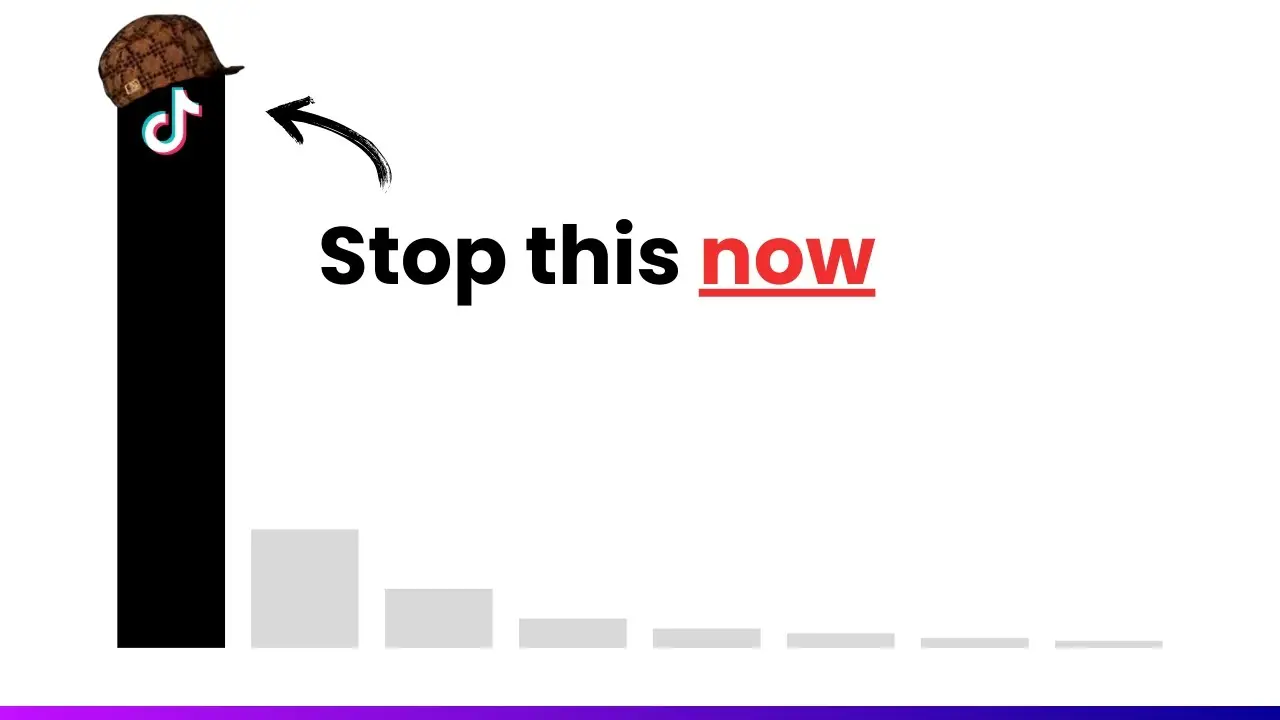Key Takeaways:
- Bytespider, a web scraping bot from TikTok’s parent company ByteDance, aggressively crawls websites, consuming massive resources and inflating hosting costs.
- Traditional blocking methods like robots.txt files and IP blocking don’t work effectively against Bytespider.
- Using Cloudflare’s AI bot blocker or specialized WordPress plugins is currently the most effective way to protect your website.
If you’ve noticed your website suddenly slowing down, chewing through bandwidth, and spiking your hosting bills, you’re not alone. There’s a new bot in town called Bytespider, and it’s wreaking havoc all over the internet. This aggressive bot, operated by ByteDance—the parent company behind TikTok—has been hitting millions of websites since April 2024. And it’s not just annoying; it’s downright harmful.
Bytespider is essentially a web crawler designed to scrape content for AI training purposes. While legitimate bots like Google’s Googlebot crawl websites to index pages for search results, Bytespider is different. It’s aggressive, relentless, and doesn’t respect common web standards. In short: it’s a nightmare for website owners.
In this post, I’ll dive into exactly what Bytespider is, why it’s causing so much trouble, and how you can effectively block it from your site. But first, here’s a quick video overview that explains the issue clearly:
What Exactly Is Bytespider?
Bytespider is a web scraping bot created by ByteDance—the company behind TikTok. ByteDance launched this bot in April 2024 to gather massive amounts of data to feed its AI chatbot called Doubao. The goal? To compete directly with AI giants like ChatGPT and Claude.
But here’s the kicker: unlike most reputable bots that politely follow rules set in your site’s robots.txt file (a file that instructs bots on where they’re allowed to go), Bytespider completely ignores these rules. Imagine putting up a “Do Not Enter” sign on your front door—and then watching helplessly as someone kicks it down anyway. That’s exactly how Bytespider operates.
If you’re curious about just how invasive AI crawlers can be, check out my recent article on how to block AI from crawling your WordPress website.
Here’s the original video explaining more about this issue: This TikTok Bot is Killing Websites
Why Bytespider Is Such a Pain for Website Owners
It’s Aggressive
Bytespider doesn’t just casually stroll through your website—it storms through like an angry mob at Black Friday sales. Websites hit by Bytespider often see thousands or even millions of requests per day. Imagine the strain on your server when it has to handle five requests per second from just one bot!
This insane crawling rate can:
- Slow down your website dramatically
- Spike your CPU usage to 100%
- Inflate hosting costs due to excessive bandwidth use
And here’s the worst part: you get absolutely nothing in return. You’re essentially footing the bill for ByteDance’s AI ambitions.
Sneaky Behavior
Most bots respect the robots.txt file—a simple text document that tells bots which pages they can or can’t crawl. It’s like putting up a “No Trespassing” sign on your property. But Bytespider completely ignores these instructions and barges right in anyway.
Even if you explicitly block certain pages or directories using robots.txt rules, Bytespider will still crawl them. It’s like having an unwanted guest who keeps sneaking back into your home even after you’ve locked all the doors.
Check out the video below for more details:
Why Traditional Blocking Methods Don’t Work
You might be thinking: “Can’t I just block this bot using standard methods?” Unfortunately, traditional blocking techniques aren’t effective against Bytespider:
| Blocking Method | Effectiveness Against Bytespider |
|---|---|
| Robots.txt | ❌ Completely ignored |
| IP Blocking | ❌ Easily bypassed (IP rotation) |
| Rate Limiting | ❌ Evaded by changing IPs |
Bytespider frequently rotates IP addresses between China and Singapore (often via Amazon AWS servers) to avoid detection and blocking measures. This makes traditional firewall rules or IP-based blocking pretty much useless.
How You Can Actually Block Bytespider
So what can you actually do? Thankfully, there are some practical solutions available right now.
Cloudflare’s AI Bot Blocker
The easiest and most promising solution I’ve found so far is Cloudflare’s built-in AI bot blocker feature. If you’re already using Cloudflare (and many of us are), here’s how you enable it:
- Log into your Cloudflare account.
- Select your website.
- Navigate to Security → Bots.
- Enable “Block AI Bots.”
Once activated, you’ll notice an immediate reduction in unwanted traffic from aggressive bots like Bytespider.
WordPress Plugins
If you’re running WordPress (like many of my readers), consider installing plugins specifically designed to block AI crawlers:
- Block AI Crawlers: A simple yet effective plugin that prevents unwanted bots from accessing your content.
- Security Plugins: Popular security plugins like Wordfence can also help detect unusual traffic patterns and block malicious crawlers proactively.
Keep in mind these solutions aren’t foolproof—Bytespider continually evolves its tactics—but they’ll significantly reduce its impact on your site.
Blocking via .htaccess
For advanced users comfortable editing their site’s files directly, you can use .htaccess rules to block specific user agents or IP addresses associated with bad bots:
# Block specific user agents
RewriteEngine On
RewriteCond %{HTTP_USER_AGENT} Bytespider [NC]
RewriteRule .* - [F,L]However, this method requires constant monitoring as Bytespider frequently changes its IP addresses and geolocations (often switching from China-based IPs to Singapore-based ones).
If you’re looking for other ways to optimize performance beyond dealing with malicious bots, check out my detailed guide on how to reduce plugin reliance in WordPress.
What if Blocking Doesn’t Work?
Even after implementing these strategies, there’s no guarantee you’ll completely eliminate malicious traffic from Bytespider forever. Bots evolve quickly—especially those backed by large corporations with extensive resources.
If you’ve blocked AI crawlers but still experience high CPU usage spikes regularly, it might be time to trim down unnecessary plugins on your WordPress site. Here’s my comprehensive guide on how to reduce plugin reliance in WordPress. It covers practical tips that’ll help streamline your site without sacrificing essential features.
Why Should You Care?
You might wonder why this matters so much if you haven’t personally felt the impact yet. But consider this: every additional request made by malicious crawlers costs money—your money—in terms of increased bandwidth usage and server resources consumed unnecessarily.
Moreover, excessive crawling negatively impacts user experience by slowing down page load times significantly—something Google penalizes heavily when ranking websites organically.
For more insights into optimizing website performance despite heavy traffic loads, check out my article on steps to make WordPress websites faster.
Ethical Considerations & Future Outlook
The broader issue here isn’t just about one specific bot; it’s about ethical data scraping practices across industries globally today—especially within tech giants racing toward advanced artificial intelligence capabilities at breakneck speeds without considering collateral damage caused along their path forward.
Companies should prioritize transparency around their data collection methods while respecting website owners’ rights explicitly outlined via standard protocols like robots.txt files—which currently hold little weight legally speaking unfortunately due largely absent regulation surrounding web scraping activities worldwide today overall!
As website owners ourselves though—we must remain vigilant against threats posed daily online proactively protecting our digital assets whenever possible through available means outlined above until stronger regulations emerge governing responsible behavior among tech companies globally moving forward into future landscapes dominated increasingly more each day driven primarily via artificial intelligence advancements rapidly reshaping digital ecosystems everywhere around us now constantly evolving faster than ever before seen previously anywhere else anytime soon enough already happening right here right now today!
For more actionable tips on maintaining optimal website performance amidst growing threats online nowadays especially related specifically towards managing effectively against unwanted intrusions regularly occurring frequently nowadays increasingly prevalent everywhere lately recently observed widely across multiple platforms worldwide nowadays consistently increasing exponentially rapidly lately check out my guide on how to reduce plugin reliance in WordPress.
Stay vigilant out there!






